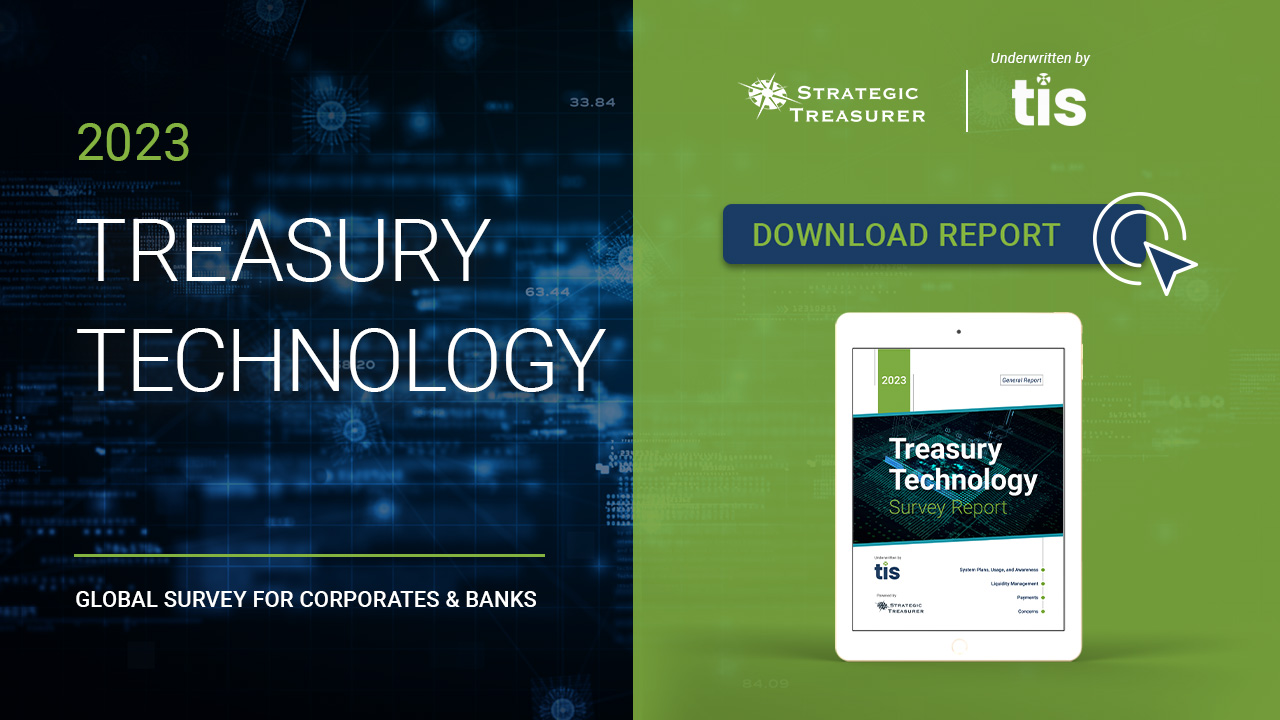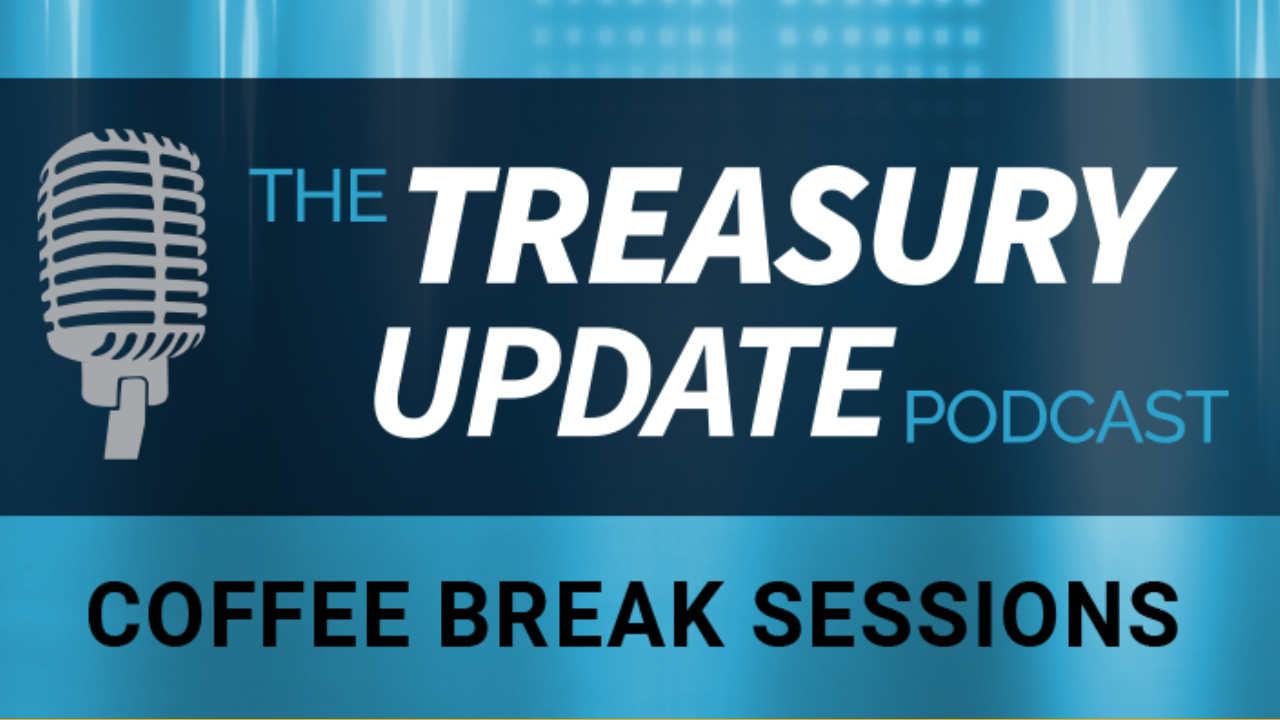
Session 96
What Is CD Laddering?
In today’s podcast, we take a quick look at CD laddering. We’ll review things to consider when setting up your ladder, tailoring ladders for your goals, and the benefits of using one.
Host:
Jonathan Jeffery, Strategic Treasurer


Speaker:
Craig Jeffery, Strategic Treasurer


Episode Transcription - (Coffee Break Session Series) - Episode 96 - What is CD laddering?
Jonathan Jeffery 00:02
Welcome to the Treasury Update Podcast Coffee Break Sessions presented by Strategic Treasurer, the show where we cover foundational topics and core treasury issues in about the same amount of time it takes you to drink your cup of coffee. I’ll be your host, Jonathan media production specialist here at Strategic Treasurer. So sit back, relax and enjoy the show. I’m here with Craig Jeffery to continue our Coffee Break Sessions on CDs, certificate of deposits. Today we’re going to talk about what is CD laddering? So Craig, what is CD laddering?
Craig Jeffery 00:37
So certificates of deposits are a savings account that have money tied up in them for a while, but earns tend to earn a higher yield higher interest rate than if you keep it short term in the bank account. Let’s say you have quite a bit of liquidity as a as a company or as an individual, let’s just say you have 10 million, for example, you don’t need 10 million of liquidity every day, and you want to earn a higher return a larger return on those funds, and you want it safe and in a bank with FDIC insurance coverage. So what is what a CD laddering do, it allows you to move out the yield curve, the normal yield curve slopes upward. And what I mean by that is, you know, the old joke about the wimpy burgers, you know, I will gladly pay you Tuesday for a hamburger today where there’s a time value of money. So the yield curve tends to slope upward. So if I have my, if I put my money with you, and you’re the bank, and I can pull it any day, you’re gonna pay me a lower interest rate. If I give it to you, and you hold it for a year, I don’t have use of it for a year you do, you’re gonna pay a higher interest rate, there’s an opportunity cost. And so generally, the longer money is held, the longer money is invested, the yield curve should increase because there’s a there’s a lack. Now, that’s not always the case. You know, right now, as we look out five years, they the yield curve drops down below that, because there’s an expectation of lower inflation, lower interest rates by the central banks. And so there’s a, the yield curve is not always, you know, normal rolling upward. The reason you would ladder, a CD is I don’t need all my money right away, I can earn a higher rate, if I put money out further. And so instead of saying I’m gonna put all my money, my $10 million out, you know, a year, maybe every month, I start investing some of it, I put, you know, let’s say put $750,000 out for 12 months, and then the next month, they do another $750,000 for 12 months, and I keep pushing it out. And so every month, I’ve got this ladder, this sequence of $750,000 worth of CDs, maybe there’s three of them, they’re coming due every month, and so I have liquidity each month. And so I’m not shortening that, but I’m gaining the benefit of the longer yield curve, you know, adding basis points to what my yield is. And if I’m fine with liquidity, then I’m sacrificing some liquidity for yield. And if that works with, you know, what you need as an individual or company that can also fit into that environment. So that’s really the broad concept of laddering CDs. Okay, that’s pretty interesting, too. Do a lot of companies do that? I wouldn’t say a lot of companies do that. There certainly are a number of companies who have extra cash. And in certain environments, CDs become, you know, fairly favorable, and they, the company can have full diversification to multiple institutions, they can ensure they have FDIC coverage, you know, insurance coverage or backstop on all those. And so from a safety perspective, you know, moderately sophisticated to organizations that don’t have, you know, investment professionals will oftentimes do that. And so it tends to be a $500 million firm certainly does that 100 million dollar firms and below certainly would do those things. Huge, you know, 25 billion 50 billion multinationals tend not to use CD laddering it becomes it can be can be cumbersome for them. And they have other options due to size and scale.
Jonathan Jeffery 04:12
Is this all you have to do it manually? Or do do banks offer a laddering system where you can say I want to put in that what was it 10 million? And I want it to I want every week money coming back? After a year or two they offer that are you have to manually buy each CD on its own?
Craig Jeffery 04:35
Yeah, I think I think you have to transact the individual CDs on your own. I’m not aware of anybody that has you know, plug it in, automatically calculates a laddering process. But the level of manual activity that set up accounts varies quite a bit. There’s, there’s different institutions or brokers that offered brokered CDs, which allows you to do the laddering through a single portal as opposed to going to multiple banks, when you go to multiple banks, you go to multiple banks, because you want to make sure you have complete safety with FDIC insurance, not just the bank guarantee, you’d go to multiple banks for competitive rates, because banks have different needs for funds at different times and are willing to pay more or less for that. And so if you only go to one institution, there’s no way you’re going to get the best rates over time, it’s going to it’s going to vary. So the ability to have competitive rates competitive shopping is necessary. And there’s, there’s ways to do that. So I would, I would use the phrase brokered CDs, as a way of helping to manage that. So it’s there still a, you’re triggering the activity, but it’s managed very easily within a portal as opposed to going to, let’s say, in the case of the 10 million, let’s say, I go to 40 institutions, to set up accounts because I want full coverage. Now I have 40, times I’m setting up KYC information with the bank, getting approval and sign out. That is, that is a huge deterrent to any most companies, if if you had to do it that way. You know, another example that 10 million is maybe I don’t want to start investing 750 out a year, each month, maybe I want to build my ladder right away. So maybe I put 750 at two months, 753 months, four months, five months and layer that out. So each month they’re maturing, and I can use those funds for liquidity. And if I don’t need it, I push it out a year, year and a half whatever my liquidity plan is in my my liquidity horizon requires.
Jonathan Jeffery 06:39
So what are some of the risks and downsides of laddering versus just a savings account or just having it in a CD for the duration?
Craig Jeffery 06:48
The main risk of of laddering or putting things in CDS is you don’t have as much liquidity and so you’re gaining some yield and giving up liquidity. But that’s the trade off. I mean, that’s the that’s the I call it the efficient frontier, which is what people talk about on the stock market. But it’s risk and reward, yield and liquidity those two, those two options, the benefits of of laddering. From a safety perspective, you need to make sure you have saved a confidence in the safety and security of the particular institution. But if you’re also keeping things under the the limits, so you have full FDIC insurance coverage, now you have not only the bank guarantee, but FDIC insurance, the risks are if you need more liquidity, you’re going to have to give up some yield, you have to pay some fees, maybe loss of interest, maybe some penalties.
Jonathan Jeffery 07:39
Okay, but laddering is a way to get more liquidity than just a regular CD.
Craig Jeffery 07:44
Yes, yeah. Because you’ll have, because if you put everything out a year, as opposed to every month, now you have liquidity coming through. And if you have a peak of need coming in, in three months, and okay, I can cover that with what’s coming due. If I have to wait a year, now more likely to have to break a CD to get out of it.
Jonathan Jeffery 08:03
Okay, we talked about it a little bit, but what are some of the other considerations you have to keep in mind while you’re setting up all those rungs in the CD ladder?
Craig Jeffery 08:12
If you’re setting up a CD ladder, and you’re doing it all individually, bank by bank, that’s really, that’s really a lot of work, that’s a significant pain. If you’re a glutton for punishment, that’s a great way to do it, I would, I would say that most people are doing that are going to take advantage of some of the brokered CD providers, those would be like Landing Rock, Stonecastle, Fidelity, Vanguard where you have a single portal, but you can pick the duration select from different banks, because they act as a broker to clear those so you can have a competitive view from within those different brokerage accounts.
Jonathan Jeffery 08:49
They keep, they keep some of the profit you would have made?
Craig Jeffery 08:54
Well as a brokerage, I mean, because because it’s an efficient distribution channel, they do charge some form of fee for managing that. But it’s you don’t see it, you’re looking at competitive rates. And so the, let’s say, the banks that are offering the CDs, go through these distributors, and they, you know, they’re willing to pay more for them. And so usually you find extremely competitive rates that brokered CDs, they tend to pay the brokers more because they’re they’re tapping a market that’s much, much, much larger than they might get in there. Let’s say they’re in a particular region or a state, and they only have so many people they can draw from and now they need to they need more funds. They want more funds, and so they they’re willing to pay up so so there is a there’s a cost to everything. It’s but when you’re looking at a competitive rate, I’m not sure how much that matters if you’re getting a highly competitive rate.
Jonathan Jeffery 09:46
Okay. Well, this has been interesting. Thanks for sharing on CD laddering.
Craig Jeffery 09:51
My pleasure.
Jonathan Jeffery 09:53
And for the rest of our listeners, make sure you tune back every first and third Thursday, and we’ll get back into some more Coffee Break Session. Let’s have a good one.
Announcer 10:06
This podcast is provided for informational purposes only, and statements made by Strategic Treasurer LLC on this podcast are not intended as legal, business, consulting, or tax advice. For more information, visit and bookmark StrategicTreasurer.com.




